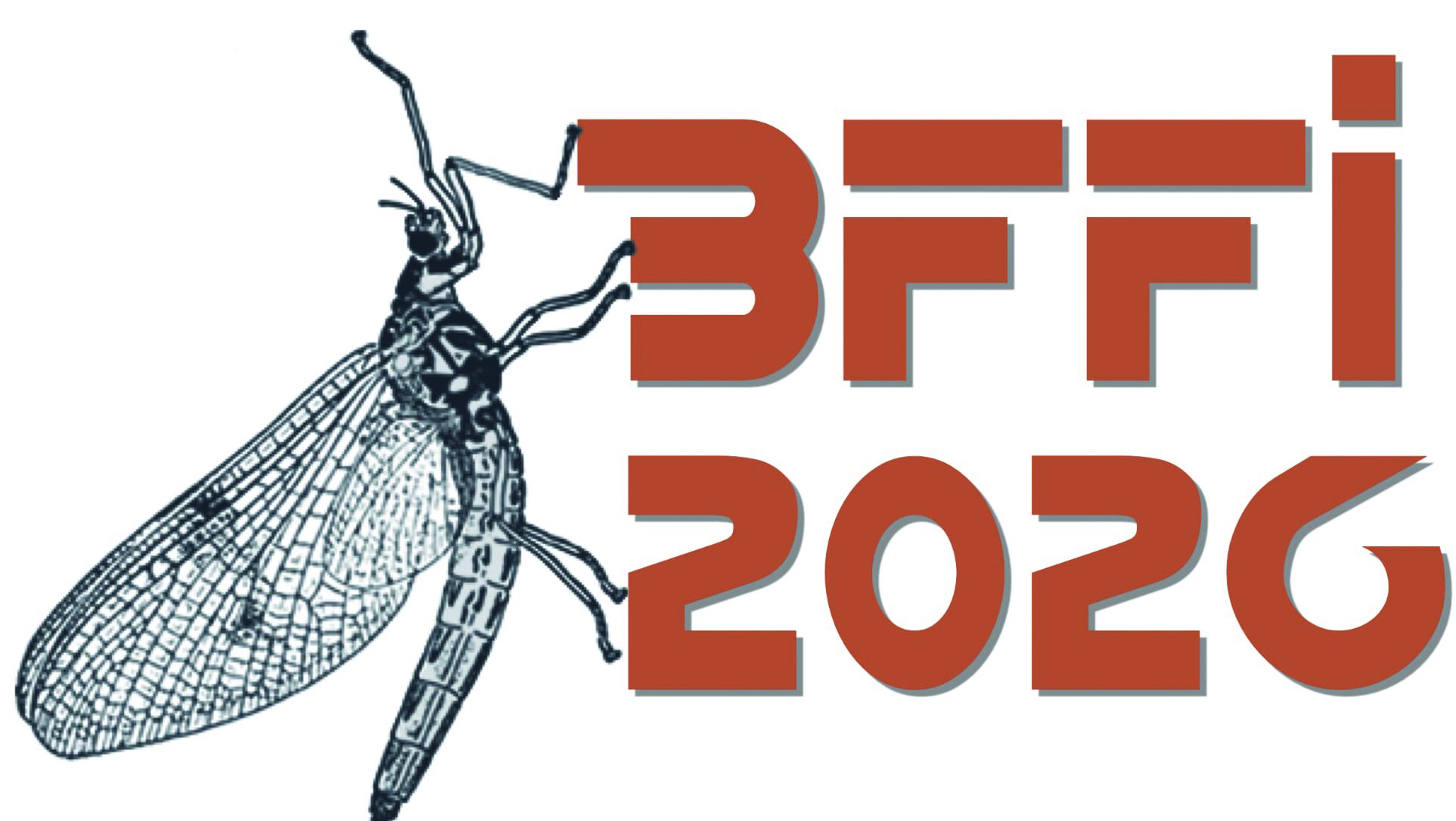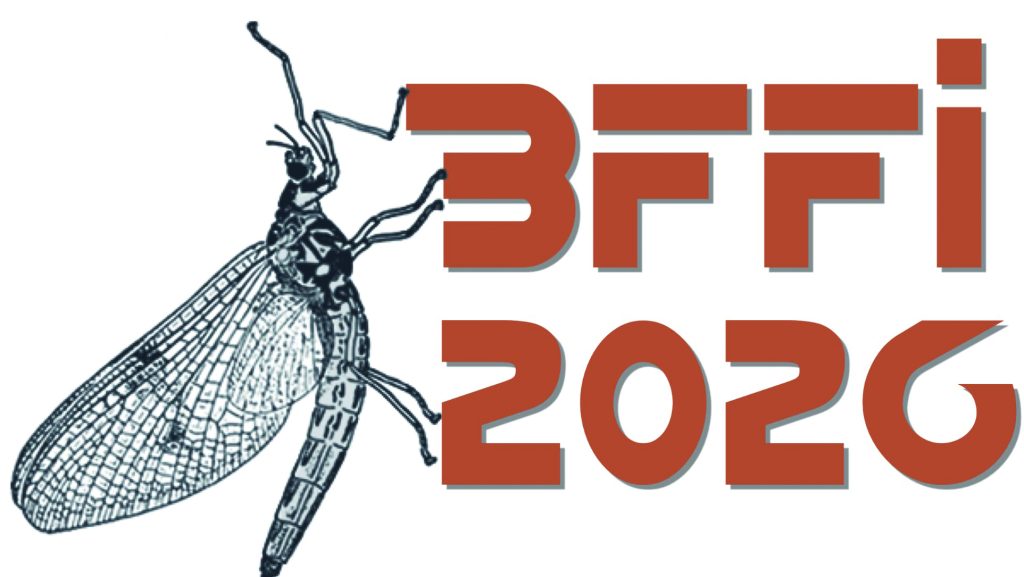How to tie the Mayfly Emerger
A sophisticated but irresistible pattern for trout seeking an easy meal
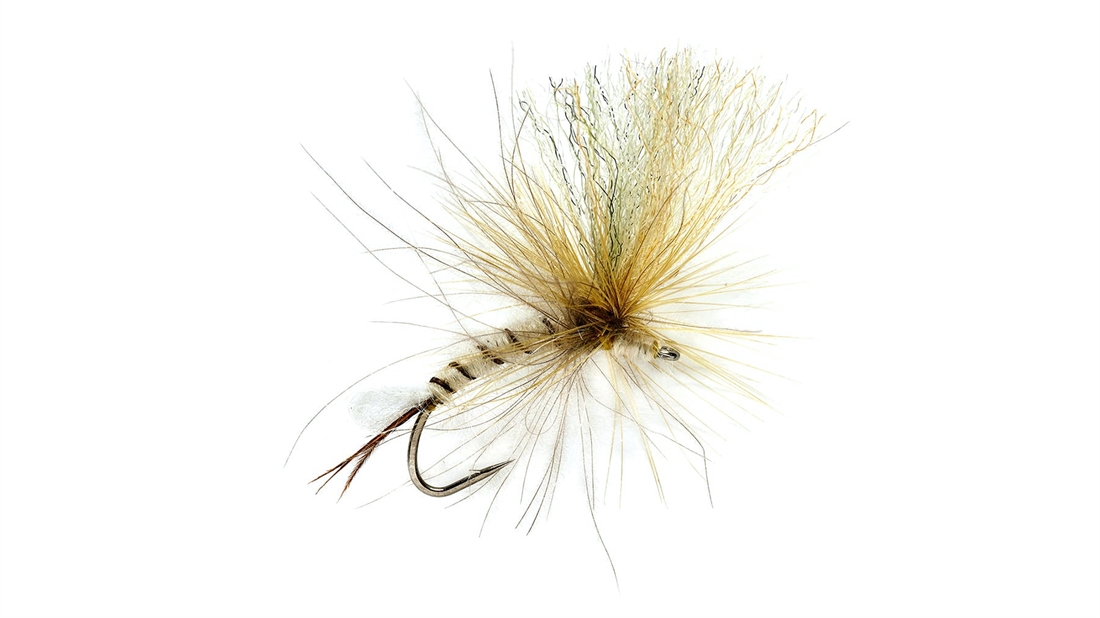
When trout are feeding on mayfly, they can ignore a high-riding artificial. An emerger pattern, the body of which sits below the surface, is often the answer. It is easier for a fish to take an insect trapped in the water’s surface transitioning from a nymph to an adult than an already hatched dun that may fly off at any moment.
Material list for the Mayfly Emerger
Hook: Size 12-14 Partridge Flash Point 15BNX Klinkhamer Extreme Thread: Light olive, 8/0-14/0. Tails: Three cock-pheasant tail fibres, not too long Shuck: Clear Antron Rib: Brown Uni Big Fly Body and thorax: Cream mohair knitting yarn Shoulder hackle: Natural CDC Parachute hackle: Medium-olive cock, 4 or 5 turns Wing: Enrico Puglisi EP International Trigger Point Fibres (from Flytek) – front: golden sulphur; rear: pale olive, trimmed to an angle
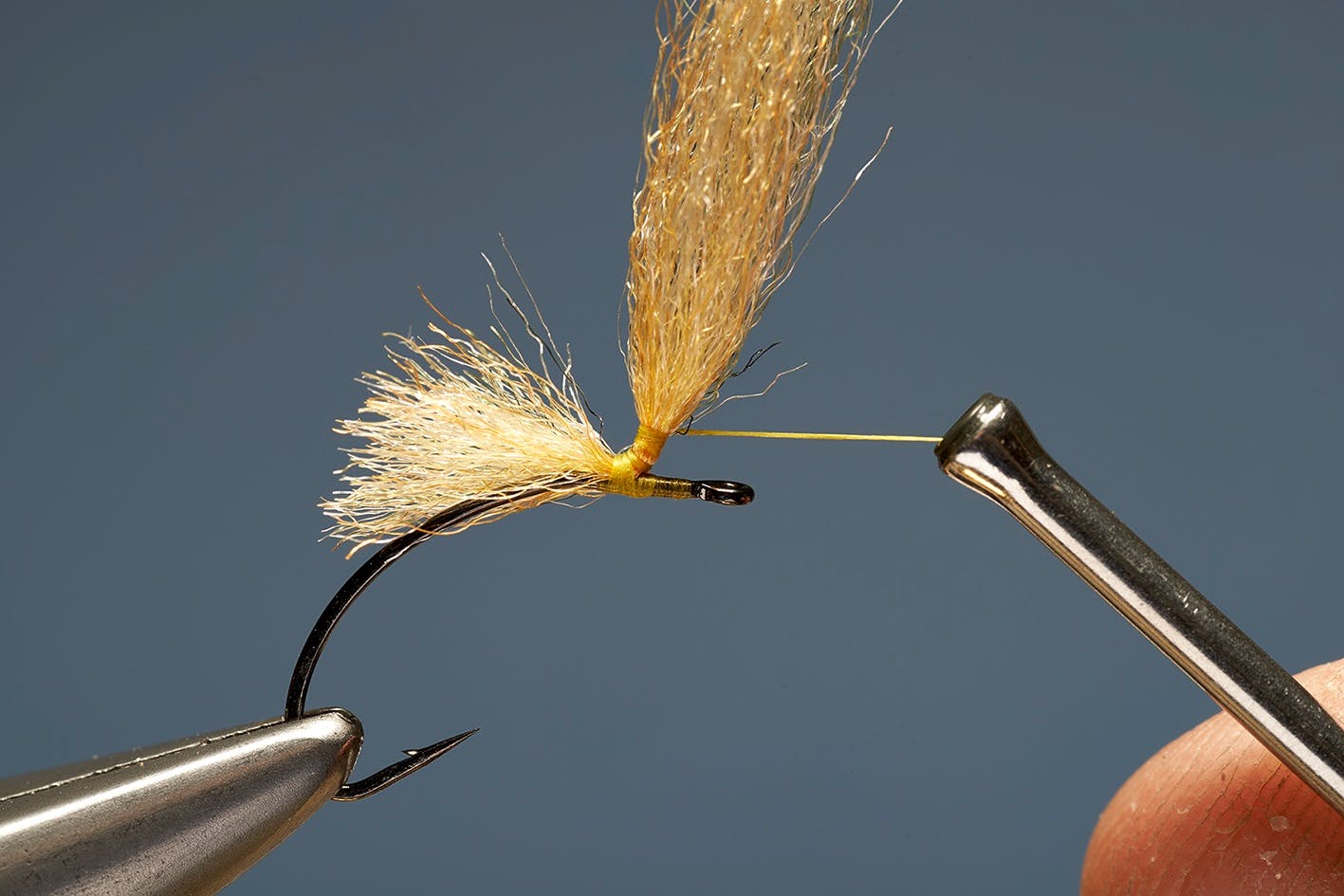
Step 1. Wind on a bed of waxed thread just behind the eye, then tie in two lengths of EP fibres, ensuring the gold one is below the other. Apply thread turns at the wing-base.
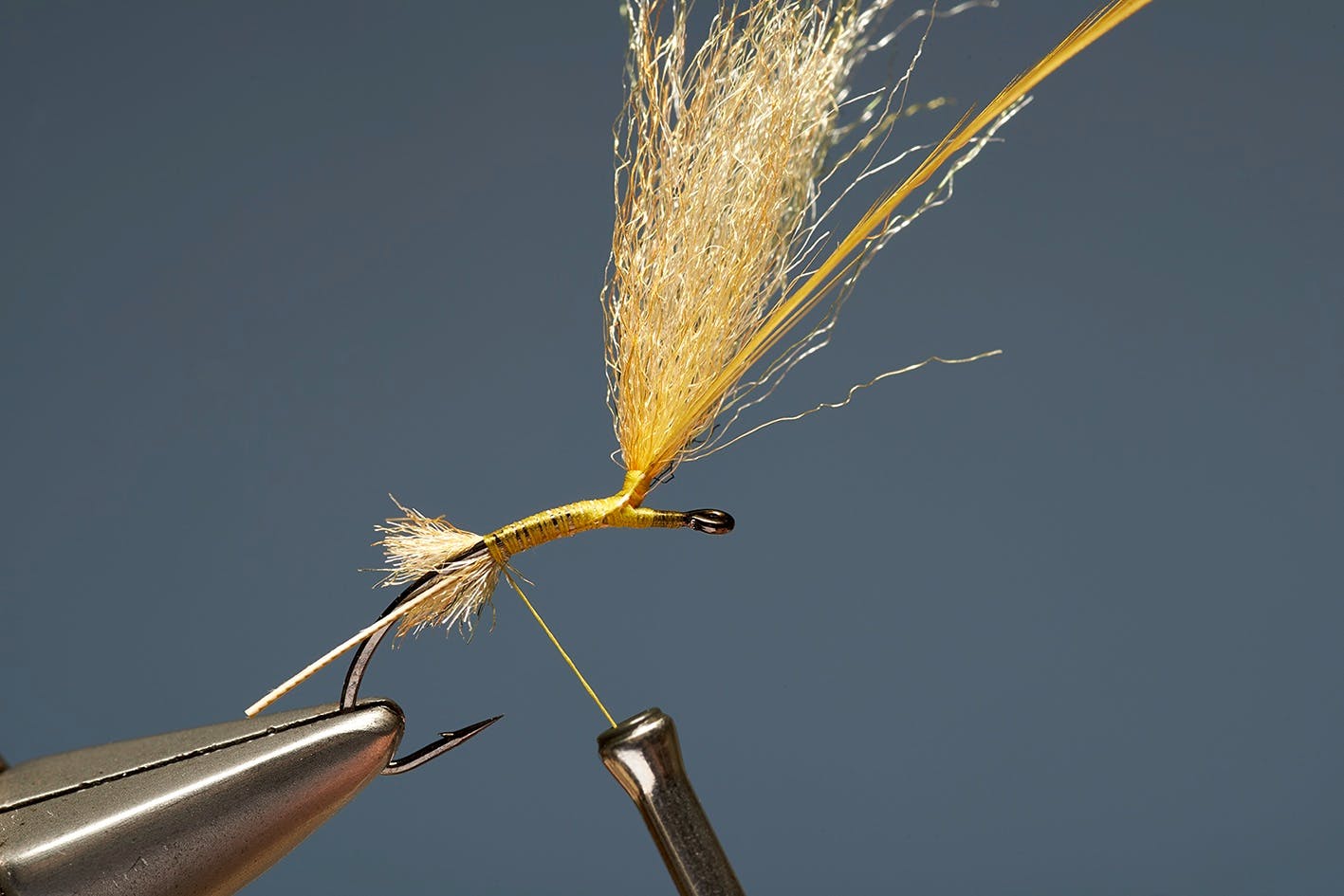
Step 2. Wind the thread up the wing post for 2.5mm, then catch in an olive cock hackle. Wind the thread down the shank, covering both wing stumps and hackle stalk.
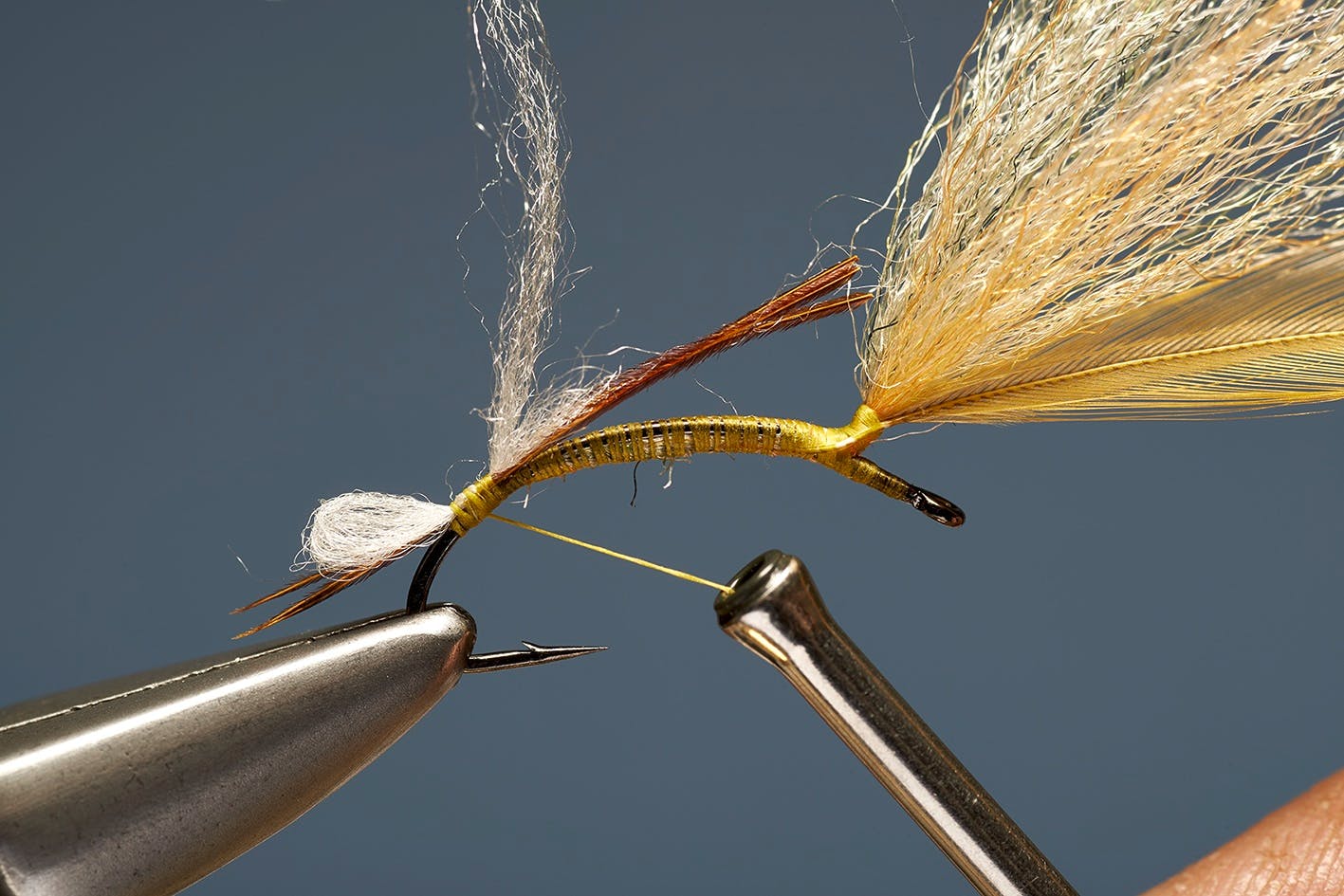
Step 3. Tie in three cock-pheasant tail fibres to create the tails then make a thin rope of clear antron. Form the antron into a loop and tie in to sit halfway along the tail.
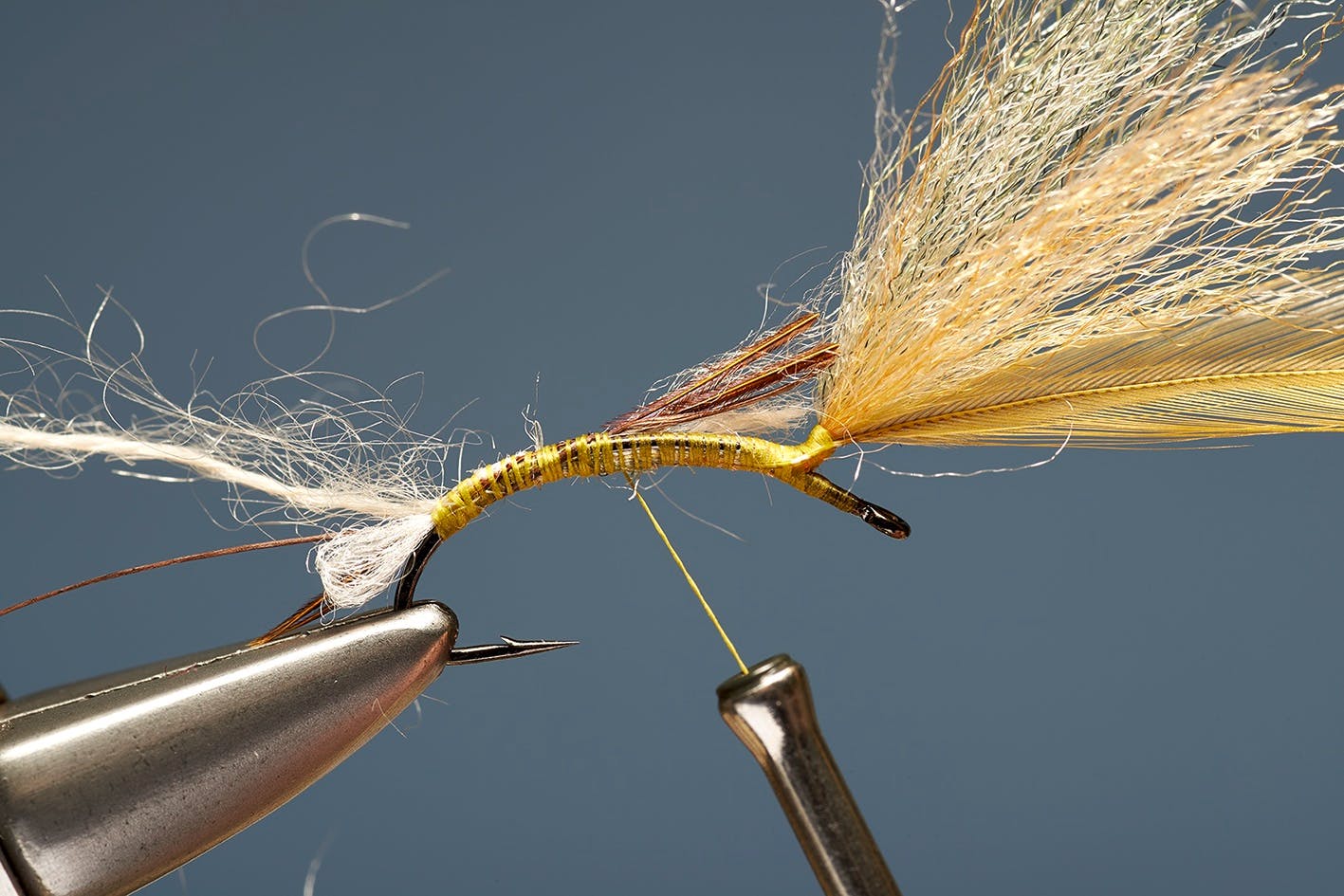
Step 4. Catch in the ribbing thread and mohair yarn at the base of the tail, then take the tying thread up towards the wing, using close turns to cover waste ends.
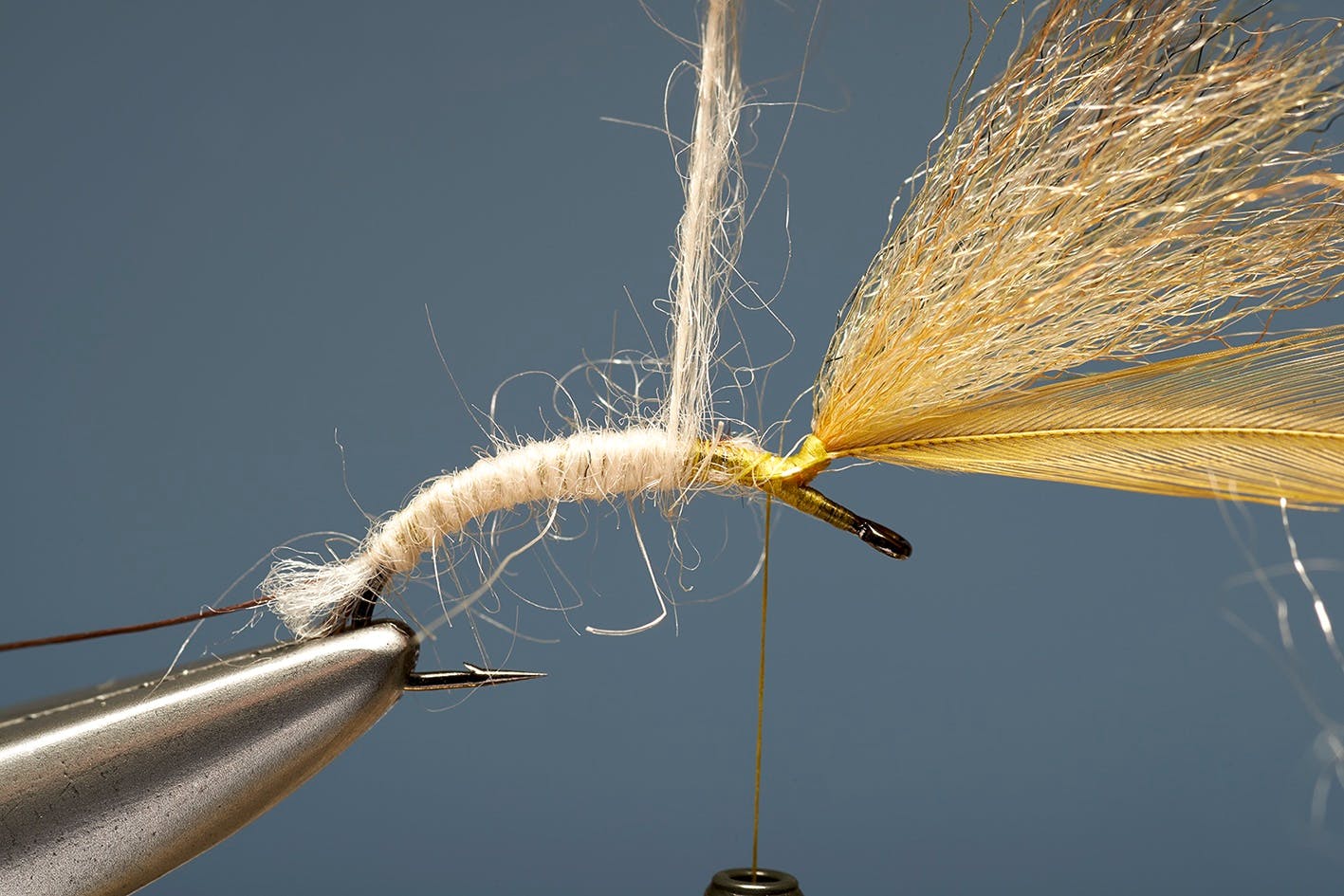
Step 5. Twist the yarn, then wind to form a tapered body. Secure it just behind the wing post but don’t trim off the surplus. Wind the ribbing thread over the body in evenly spaced turns.
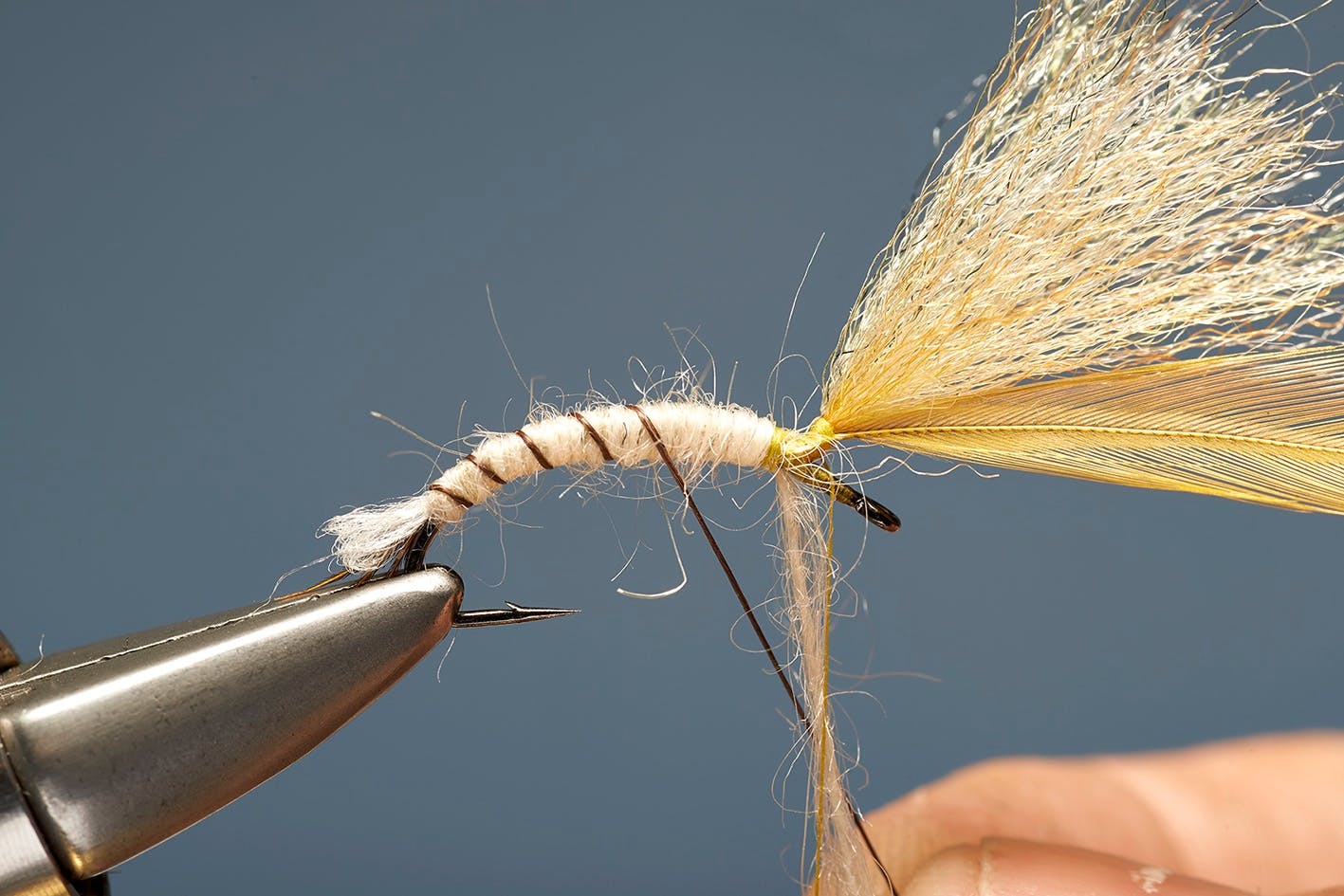
Step 6. Secure the loose end of the rib and trim off the waste. Strip basal fluff from a CDC plume, tie it in by its tip 2mm behind the wing, and then apply three turns.
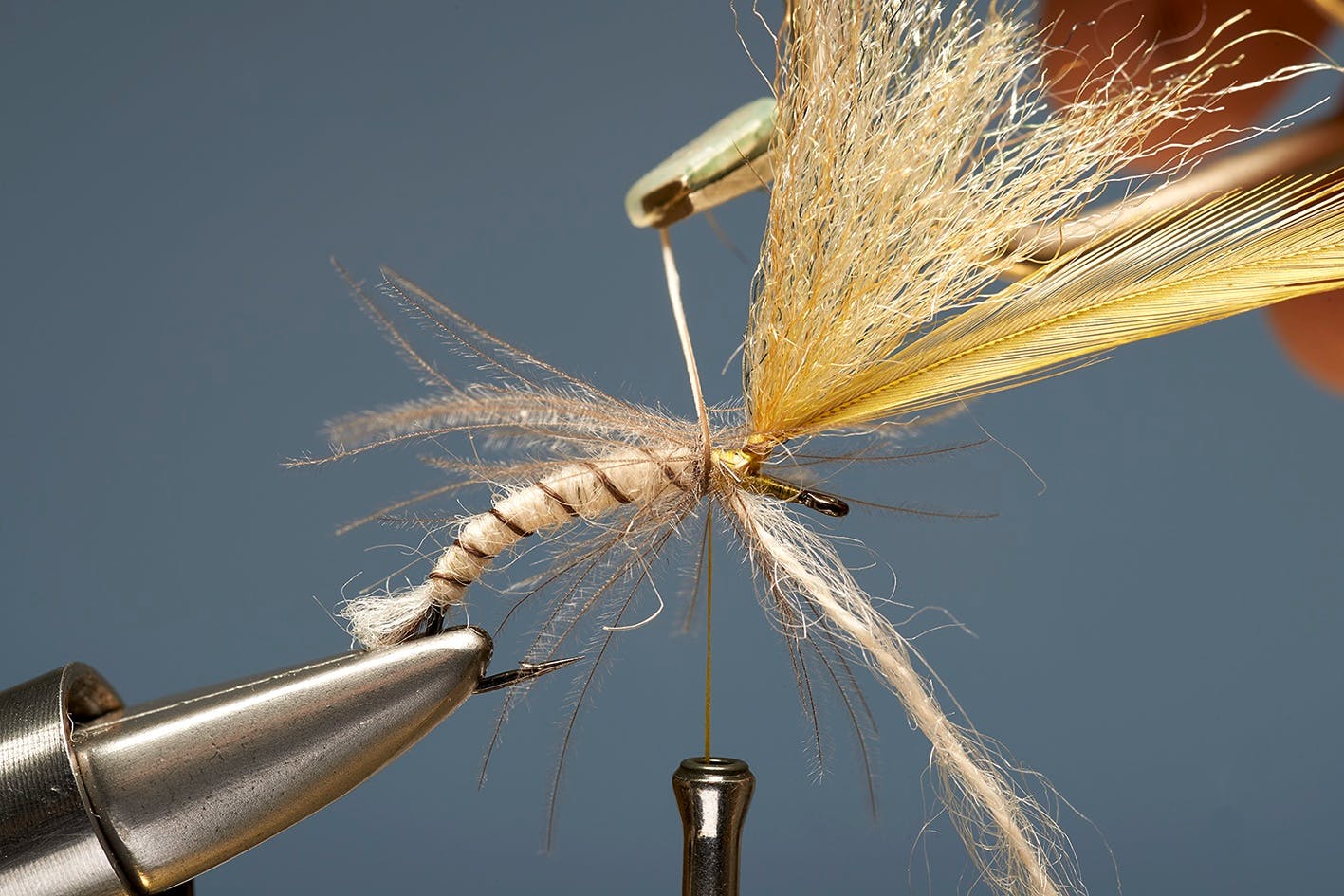
Step 7. Secure the CDC’s stem and trim it off. Take the thread to the front of the wing. Apply close turns of the yarn, winding it to the eye and back to create the thorax.
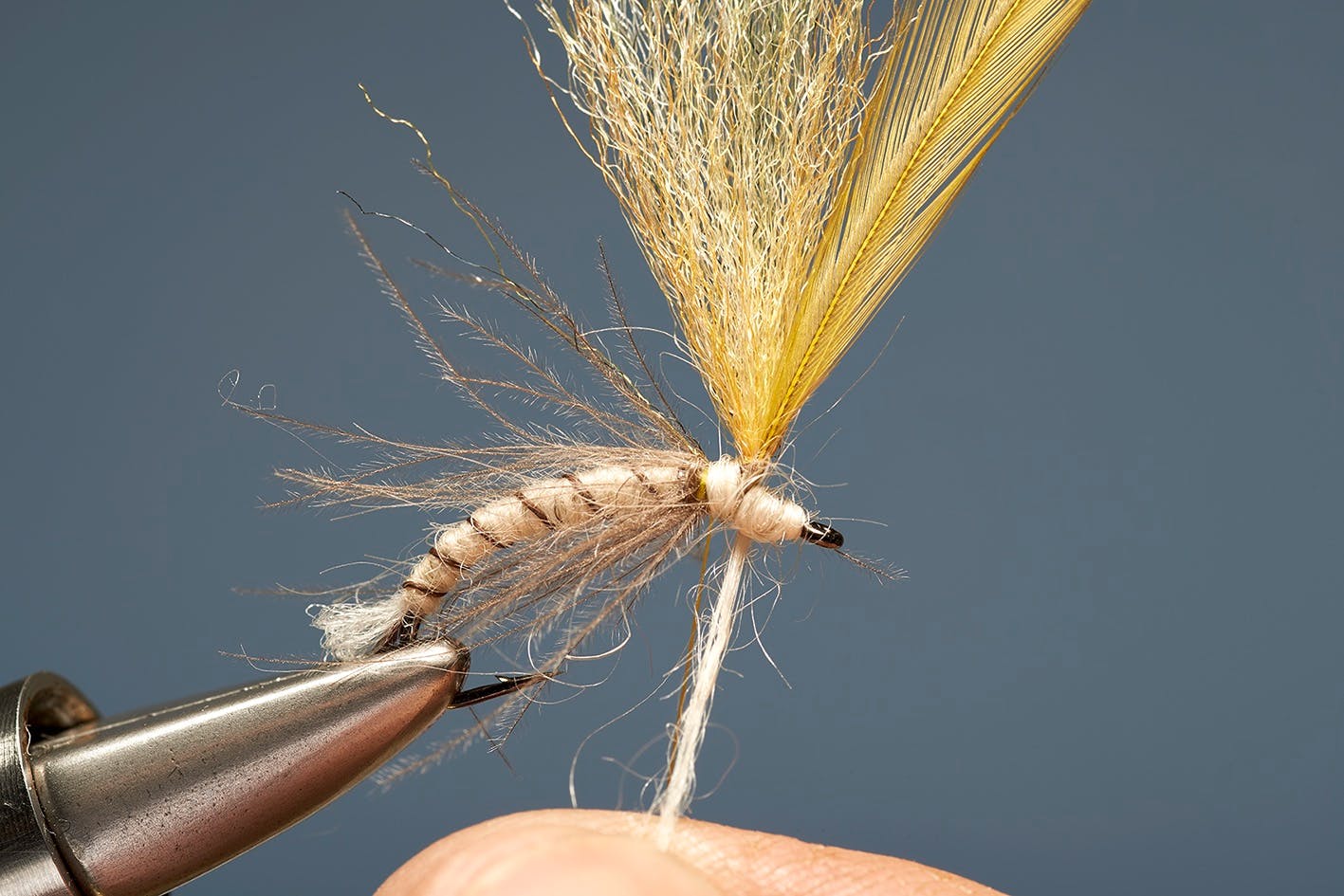
Step 8. Secure the loose end of the yarn and trim off excess. Next, using hackle pliers, wind four close turns of the hackle down the base of the wing post to the thorax.
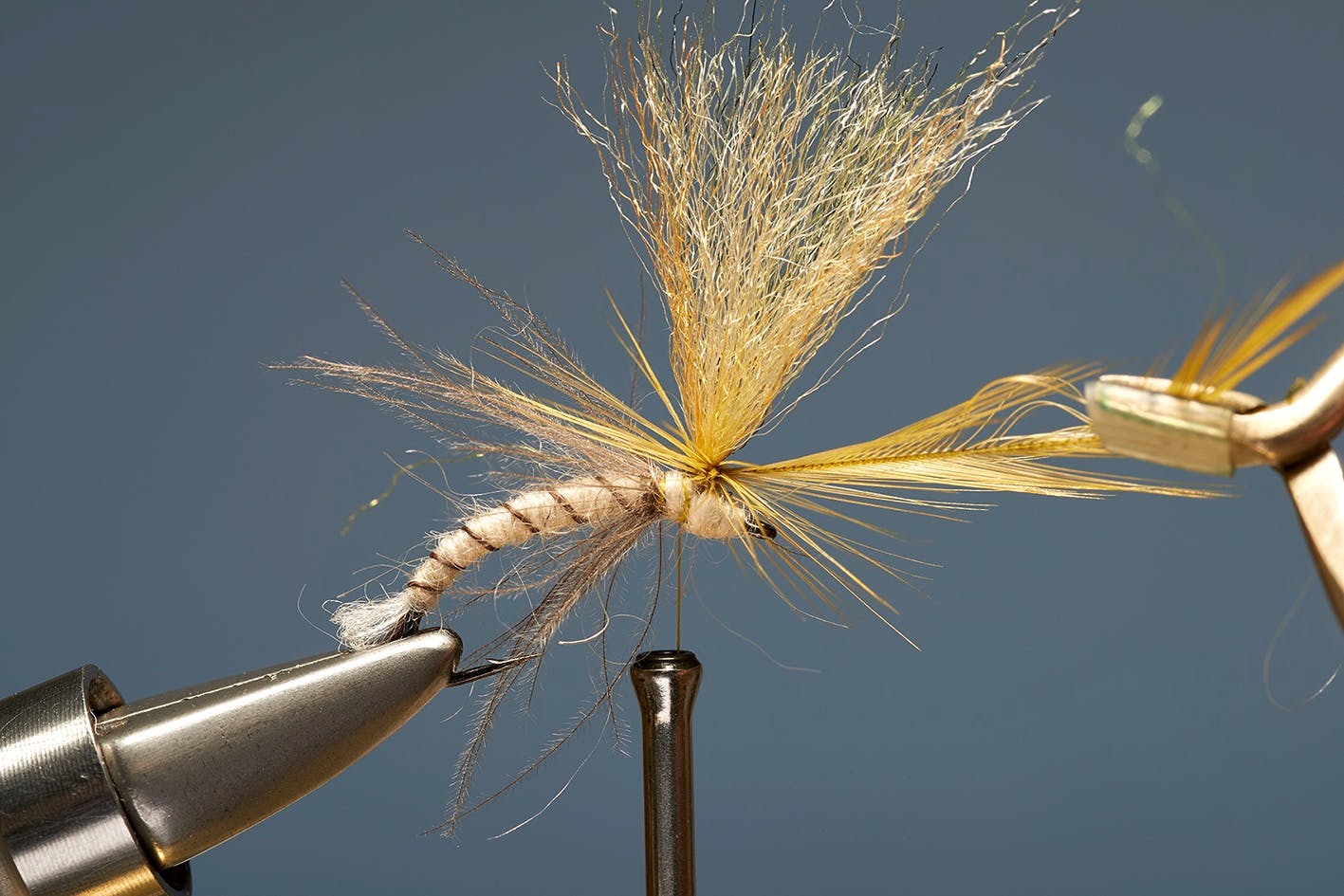
Step 9. Apply two thread turns over the last hackle turn to lock the tip in place without trapping the CDC fibres. Trim off the surplus hackle then stroke the fibres upwards.
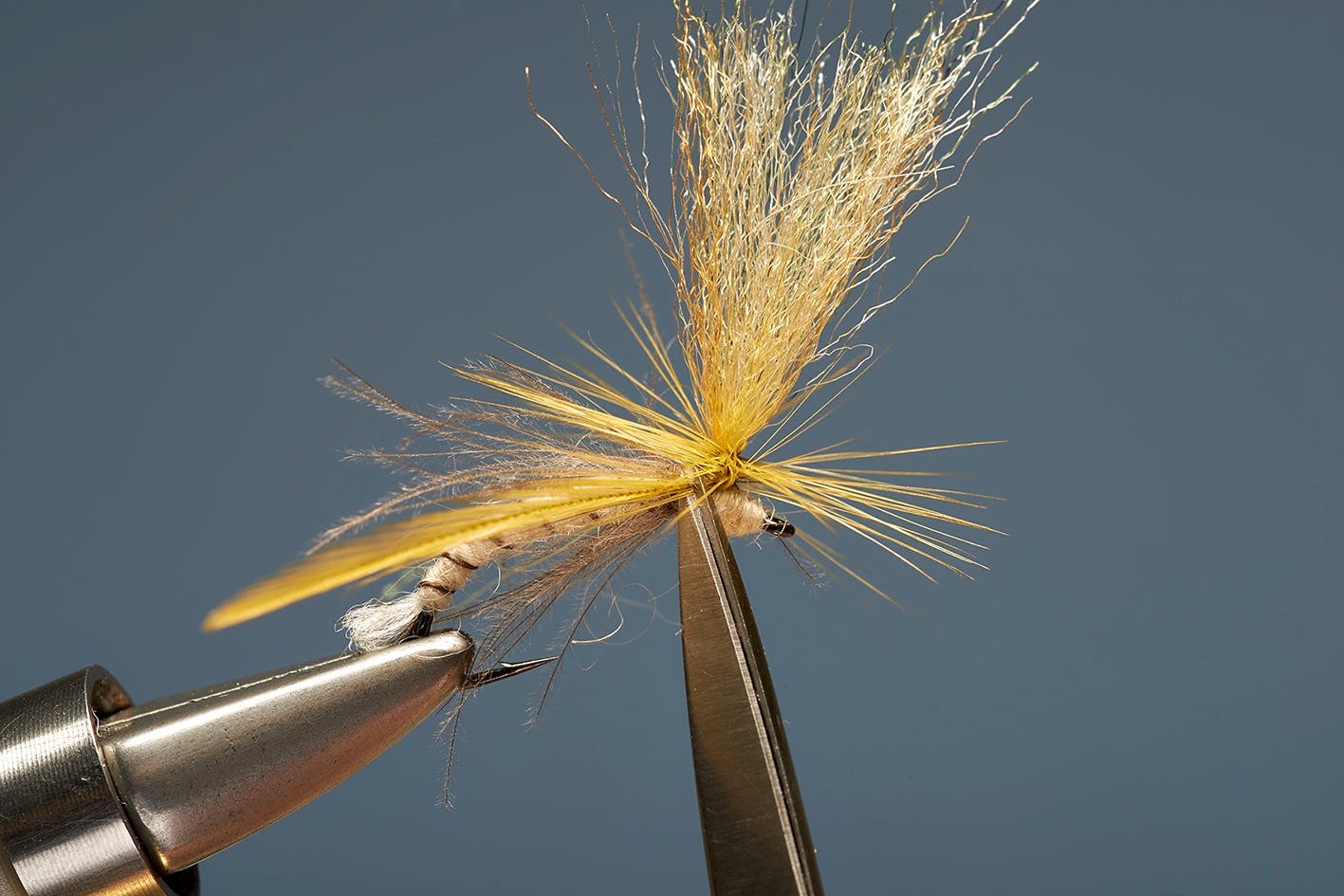
Step 10. Apply varnish to 2cm of the thread and cast off with a two-turn whip finish. Remove the thread end and trim the wing to about 1cm with a slanting cut.

